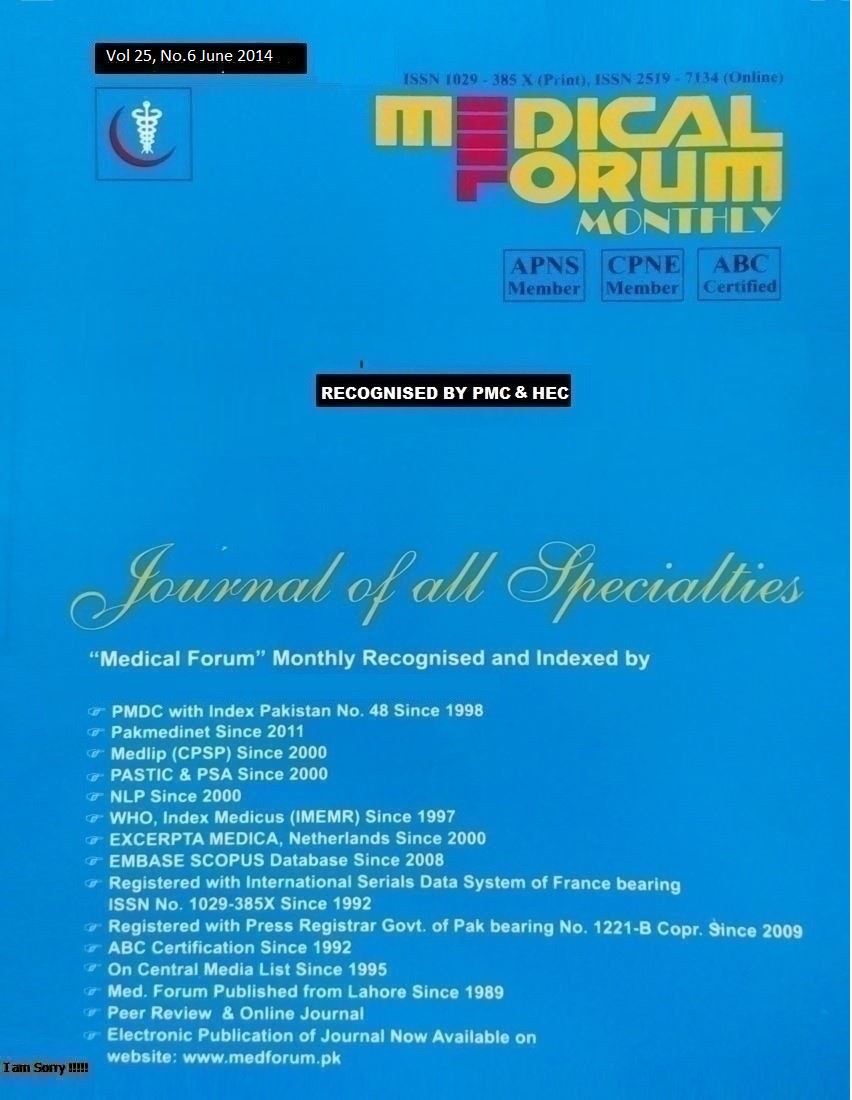
9. Treatment and Incidence of Recurrence of Varicose Veins of Lower Limbs
1. Ansar Latif 2. Muhammad Asad Farhan 3. Khalid Waliullah 4. A. Hamid
1. Assoc. Prof, of Surgery, HMDC, Gujrat 2. Asstt. Prof. of Paediatrics, IMDC, Sialkot 3. Asstt. Prof. of ENT, IMDC, Sialkot 4. Prof. of Forensic medicine FMDC, Abbottabad
ABSTRACT
Objective: To study the presentation of varicose veins of lower limbs, treatment in our patients; and to see the causes of recurrent varicose veins at Islam Medical College, Sialkot, Pakistan.
Study Design: Observational and descriptive study.
Place and Duration of Study: This study was carried out at the Department of Surgery, Combined Military Hospital, Sialkot; from June 2007 to August 2010.Department of Surgery, & Islam Teaching Hospital, Sialkot from September 2010 to September 2013.
Materials and Methods: Adult patients referred by general practitioners with varicose veins of lower limb were included in the study. Data of sixty seven patients with varicose veins of lower limb was collected from June 2007 to September 2013. Patients were distributed in four groups depending upon the surgical procedures carried out. Full detailed history, examination, and investigations were done. Results of treatment were assessed by regular follow up. Data of only those patients was included who could complete follow up for at least 6 months.
Results: Out of 67 patients included in our study, 25 cases were having recurrence; 8(32%) was recurrent cases from pervious surgeries from somewhere else and 17(68%) cases were diagnosed with recurrence after surgery at our hospitals. So, the incidence of recurrence in our cases exclusive remained to be 29%.
 Failure or recurrence in “Ligation” only was 38.5%, in ligation and reverse stripping was 30.7%, stab avulsions was 44.44% and in patients who underwent ligation, reverse stripping and stab avulsions was 12.5% after follow up of minimum 6 months. The patients are still on followup and the percentages are likely to increase with time as varicosities could be obvious.
Failure or recurrence in “Ligation” only was 38.5%, in ligation and reverse stripping was 30.7%, stab avulsions was 44.44% and in patients who underwent ligation, reverse stripping and stab avulsions was 12.5% after follow up of minimum 6 months. The patients are still on followup and the percentages are likely to increase with time as varicosities could be obvious.
The anomalous double great saphenous veins, neovascularisation or missed tributaries of great saphenous vein during surgery and deep venous thrombosis before and after surgery were the most observed finding of recurrence. The recurrence of varicose veins was more in leg only as compared to both leg and thigh.
Conclusion: Saphenofemoral ligation with below knee stripping and stab avulsions combined has the least frequency of recurrence, while Trendlenberg operation alone has the highest.
Key Words: Causes, Patterns, Recurrence, Varicose veins, stab avulsions and stripping
